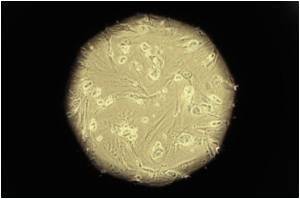
A University of Edinburgh team, including Dolly the Sheep cloning pioneer Professor Sir Ian Wilmut, transformed ordinary skin cells from patients into "tainted" motor nerves carrying the defect.
The scientists hope that the work would provide new insights into how the disease develops, and allow the rapid screening of potentially therapeutic drug compounds.
"This is so much simpler a procedure, quite apart from the ethical issues," the Scotsman quoted Wilmut as saying.
"It's possible to take these cells, multiply them up to a very large number, and keep doing this for years, and to make these two types of cells, motor neurone and support cells.
"The funding from the MND Association will help us to understand why specific nerves die in motor neurone disease. This is a critical next step towards the ultimate goal of developing an effective treatment," he added.
Advertisement
Although it appears to be a direct cause in just 1 per cent of cases, the protein produced by the gene is found in the brains of up to 90 per cent of people with the disease.
Advertisement
One of the chief aims of MND research was to find a simple way of studying the disease closely in a laboratory dish.
New stem cell technology has now made this possible by allowing scientists to manufacture large numbers of human cells with the TDP-43 gene.
The Edinburgh scientists successfully produced induced pluripotent stem (iPS) cells from skin cells donated by three patients and managed to transform them into TDP-43-bearing cells.
Professor Siddharthan Chandran, a leading member of the Edinburgh team, described MND as a "shocker of a disease" for which there was no effective treatment.
The scientists hope the new research will at the very least lead to treatments, which hold back progression of the disease.
"Being pragmatic I think slowing down the disease is the first aim, stopping the disease the second, and the home-run will be to restore function," said Chandran.
Source-ANI
RAS /








